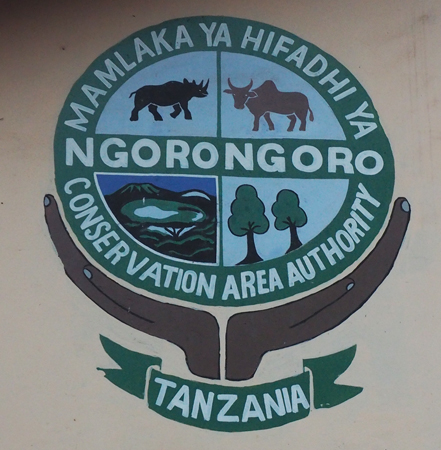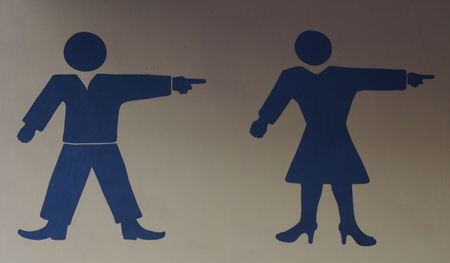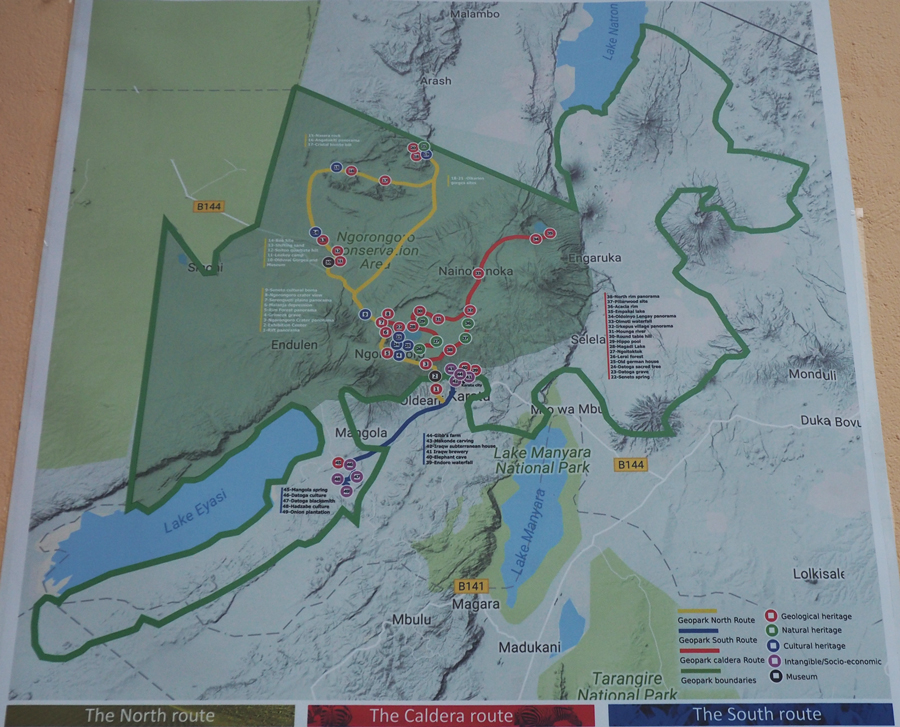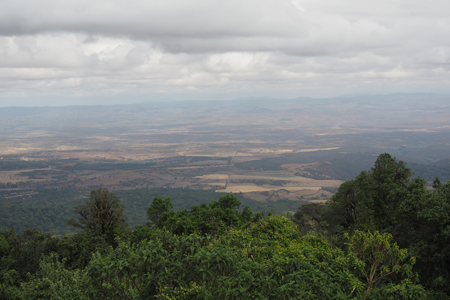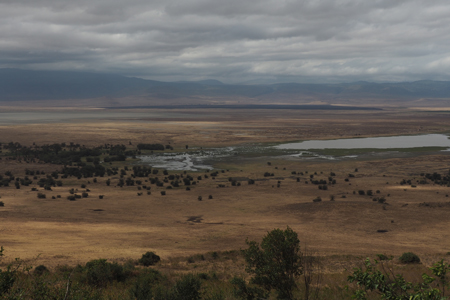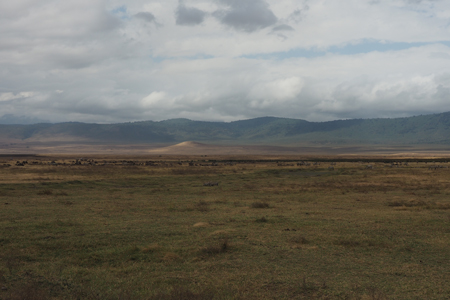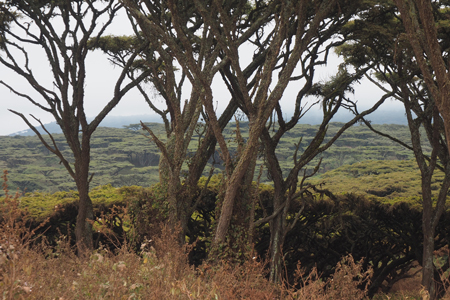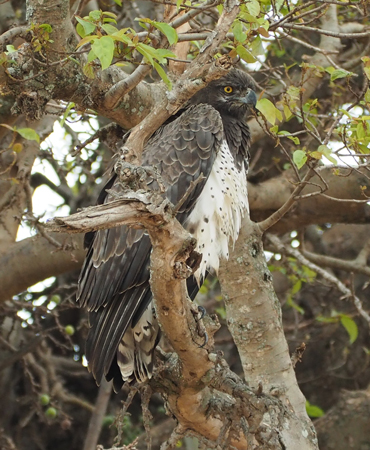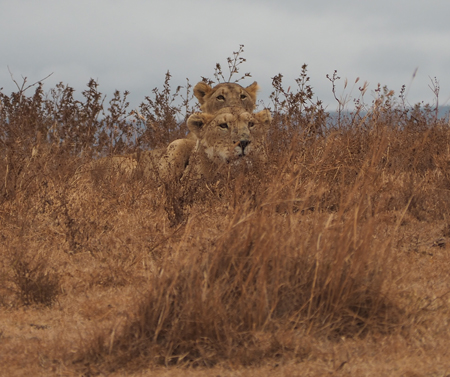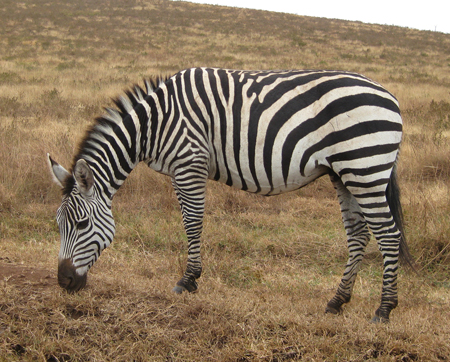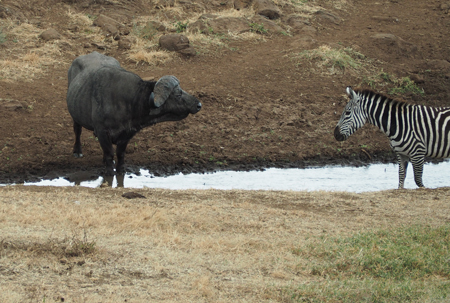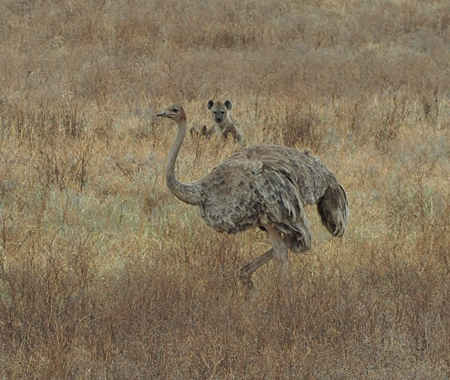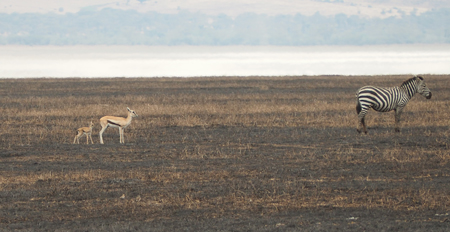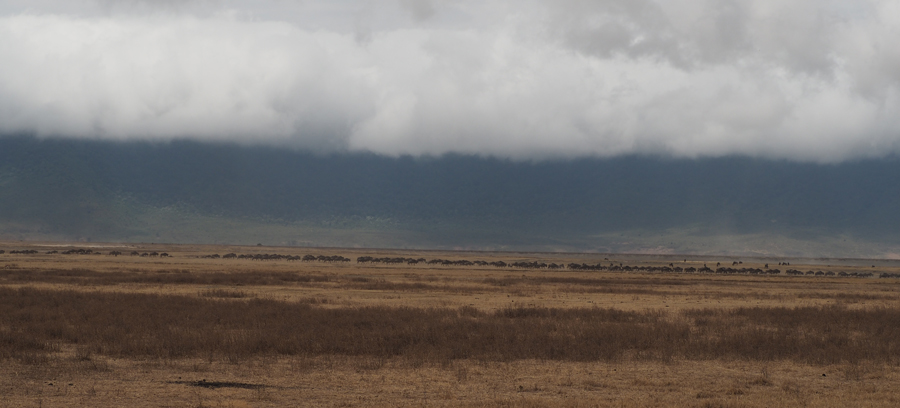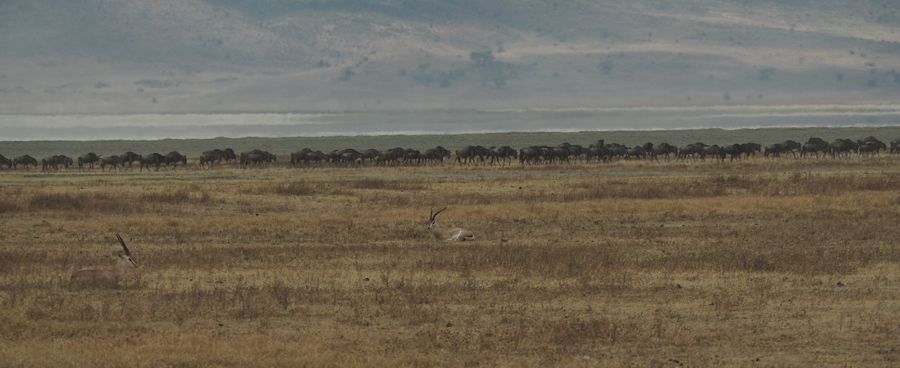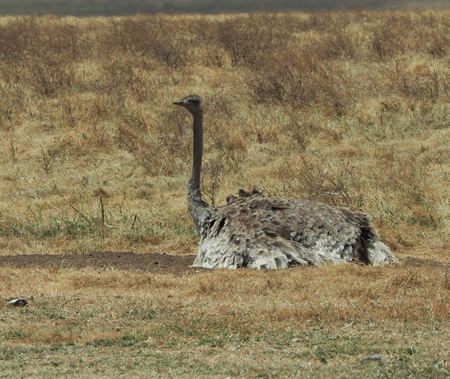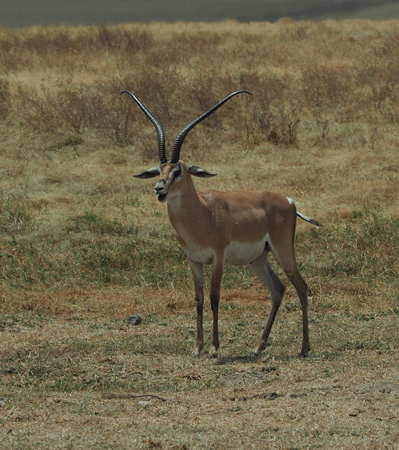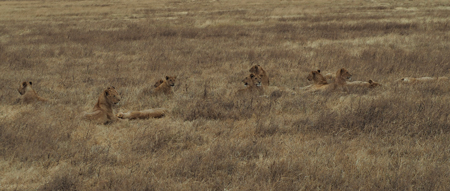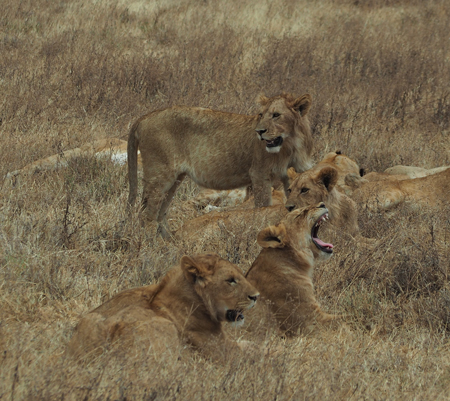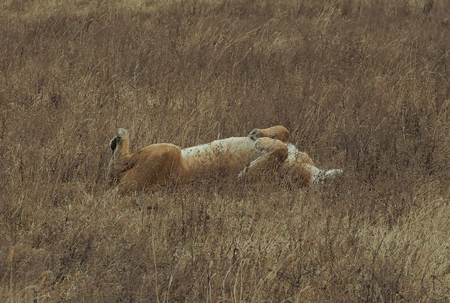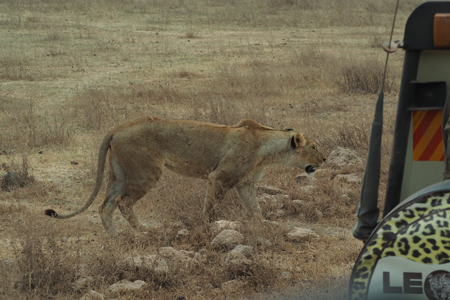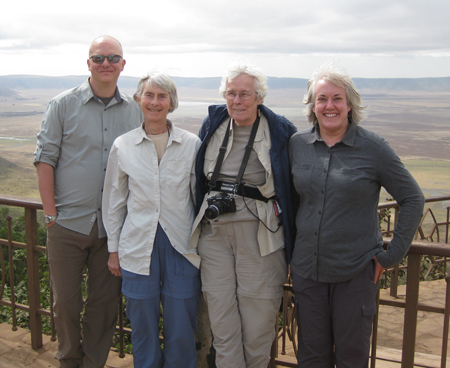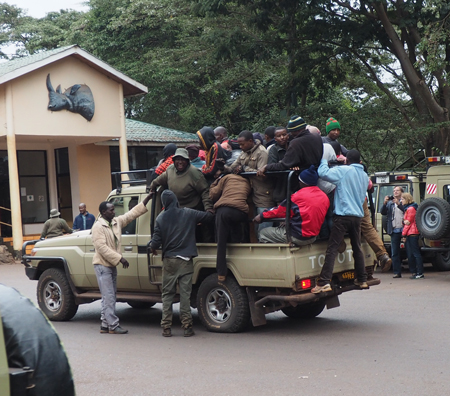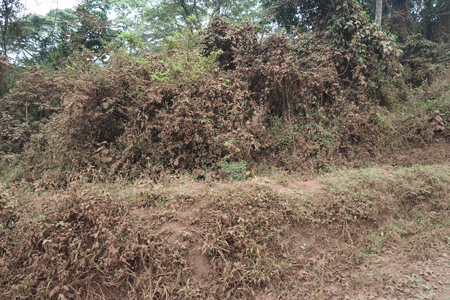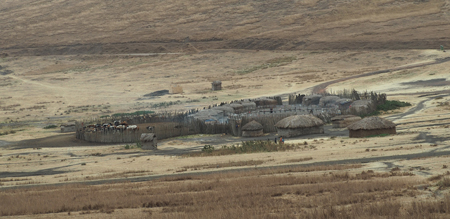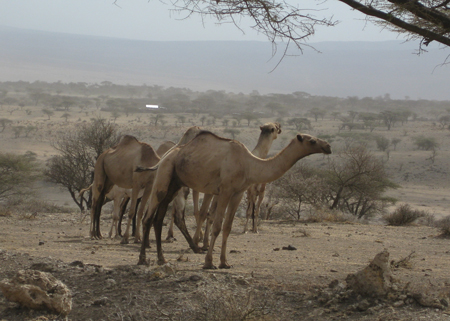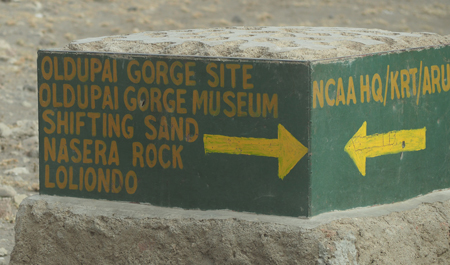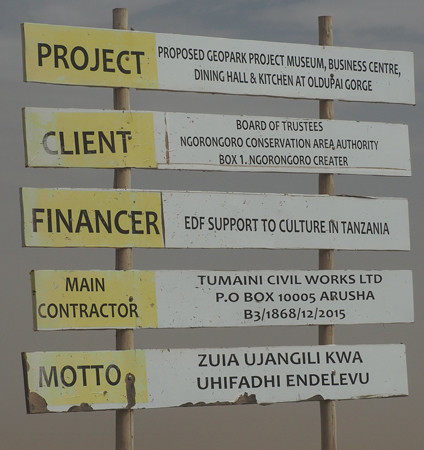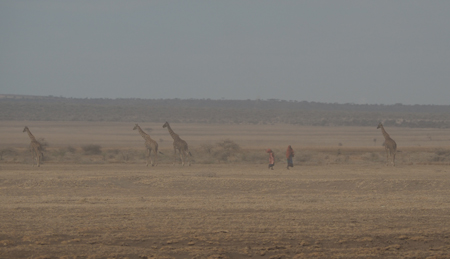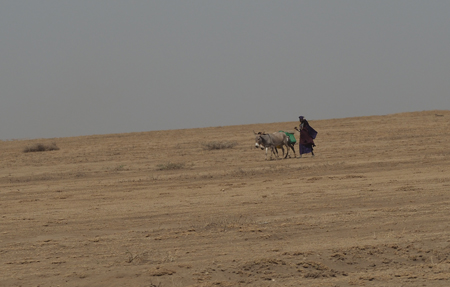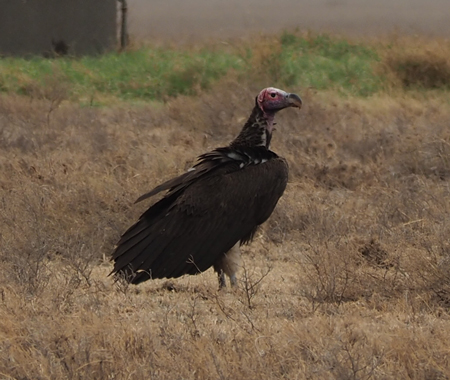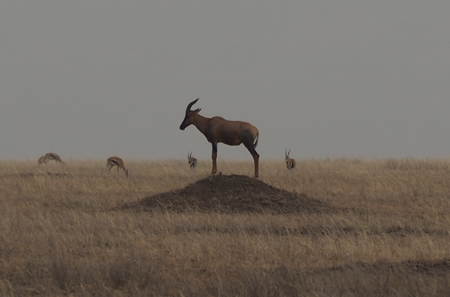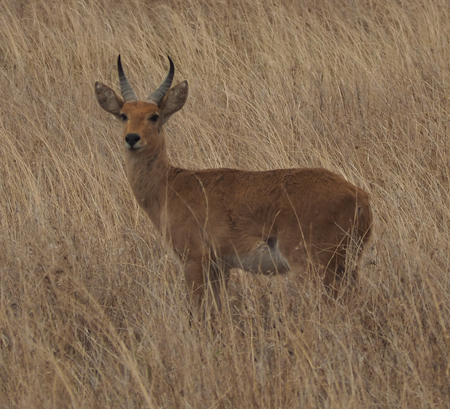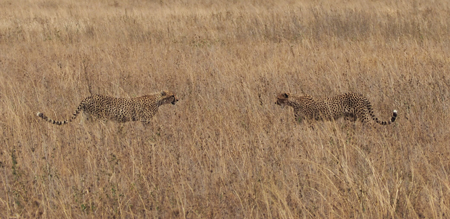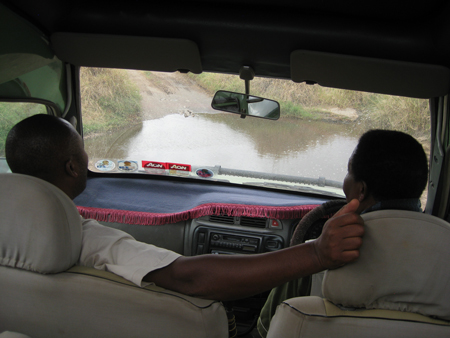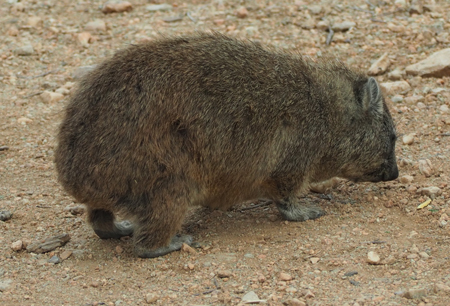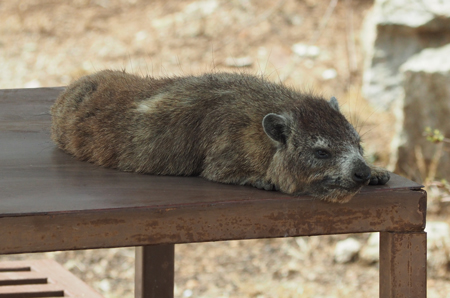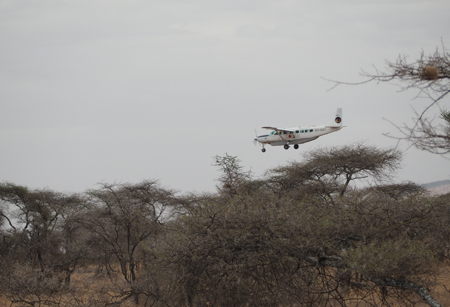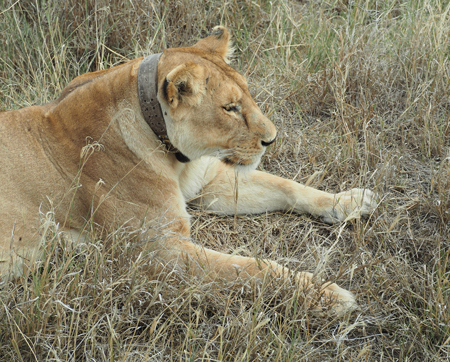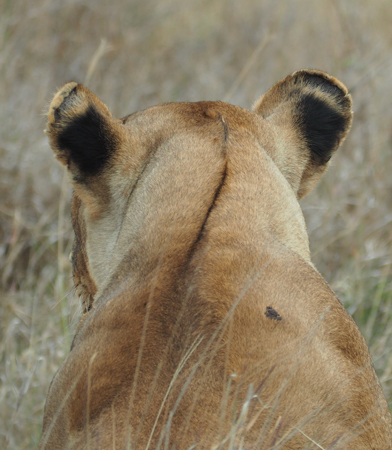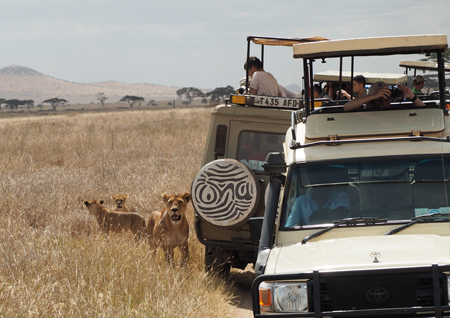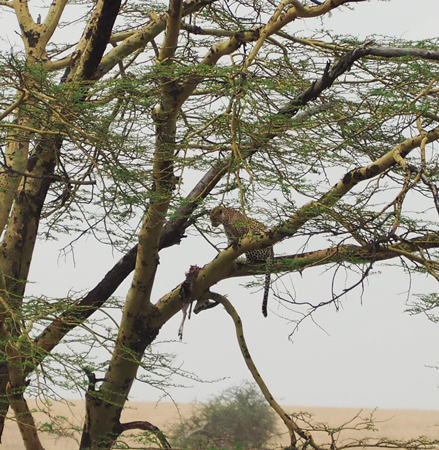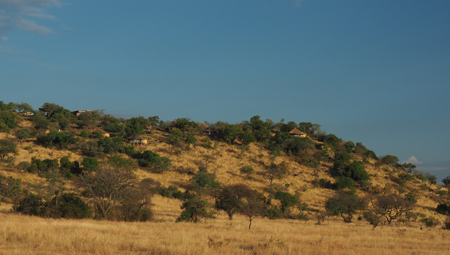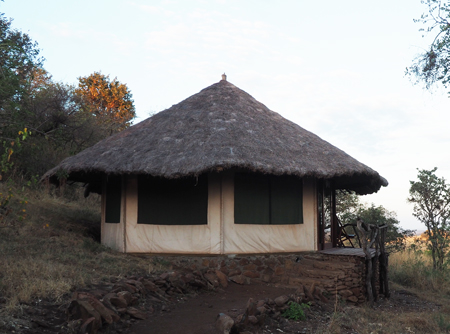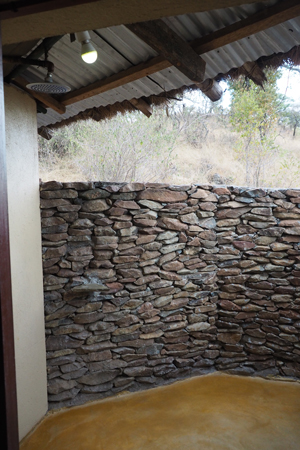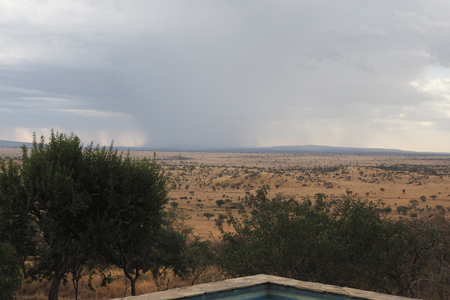Mon., 8/14/2017 – Ngorongoro Crater
Today we rode the dirt road up and over the 1900-foot high rim of the Ngorongoro Crater to get to the 19-mile wide caldera with three ecosystems for animals and birds. The crater is the result of a massive volcano that exploded and collapsed on itself two to three million years ago. The floor of the caldera covers 100 square miles and is managed by the Ngorongoro Conservation Authority. Elephants roam the steep jungle-like sides of the rim tromping through the thick vegetation and eating minerals from the red dirt banks along the road. At 7,000 feet high, the top of the rim is cool and was covered in a morning mist. We could not see far until we dropped below the cloud level. The jungle opened to grass and flat topped umbrella acacia trees.
Some of the grasslands were black from a controlled burn to prevent massive killing wildfires. There are some lakes in the wet season that are now salt pans. There are two small rivers and natural springs and marshes so there is plenty of water for the millions of animals. The animals stay here for life – they don’t have to migrate.
Creative sign
Map of Ngorongoro and surrounding area
Ngorongoro Crater - from the rim
Ngorongoro Crater - salt pan in the center
Ngorongoro Crater
Ngorongoro Crater
Umbrella Acacias
Martial Eagle
Lions peaking out of the grass
Zebra
Cape Buffalo asking the Zebra to move on
Cape Buffalo with Ox Peckers on its back
Hyena
Young hyenas deciding to leave the Ostrich alone
Thomson's Gazelles and Zebra
Golden Jackal
Wildebeests walking to the water hole
Wildebeests walking to the water hole
Hippos
Hippos - blowing bubbles
Hippo
Ostrich
Impala - snorting, a weird sound
Warthog - lovely tusks
Hartebeest
Lions
Lions
Lion - resting
Young Lion exploring
Lion
Gale and Marge at the crater rim
Jason, Gale, Marge, and Pat at the crater rim
Tues., 8/15/2017 – Serengeti
Today we drove for 10 ½ hours over washboarded, very dusty roads to get into the Serengeti National Park. From Karatu we drove up to the rim of the Ngorongoro Crater and halfway around it to get to the southern entrance of the Serengeti Plain. The east side of the crater rim is thick jungle but the west side gets little rain and is sparse grassland. In the depression beyond the crater there were many Maasai villages and thousands of cattle. We even saw one Maasai herder with a group of camels. Many women and children were walking or using donkeys to get water, but we never saw a pump or watering hole.
Overloaded?
Road dust on the plants
Maasai village
Camels - not native to this area
We encountered several areas of road construction where piles of dirt or gravel were dumped from dump trucks and left to be graded and packed with a roller. On the way we passed the entrance road to the Oldupai Gorge archeological site. Unfortunately, a stop there was not on our itinerary – next trip! We drove through the “endless” plain where the migrations of animals take place.
We ate another box lunch at a picnic site with “facilities” and a parking lot full of safari vehicles like ours.
After lunch we began to see some new animals along with all the usual ones: Golden Jackal, Topi - standing on top of a termite hill (the topi is called the blue jeans antelope because of his dark, bluish legs), Hartebeest - whose horns form a heart when he looks at you, Reedbuck, and Hyrax. We have been very lucky so far at finding the big cats. We have watched 44 lions, 6 cheetahs, and 3 leopards.
We have had cloudy skies everyday that has kept us from dealing with hot sun but today the clouds actually dropped some rain on us briefly, twice. It was enough to settle some of the dust.
Serengeti National Park - at last
Main road and DUST
Giraffes and Maasai women walking - probably to get water
Fetching water with donkeys
Secretary Bird
Vulture
Golden Jackal
Topi
Topi - also called the Blue Jeans Antelope because of his markings
Reedbuck
Cheetahs
Cheetahs
Cheetahs
Road hazard
Lunch and facility stops were at a picnic area maintained by the Park. The facilities and picnic area were very well kept. In the picnic area were lots of the small rodents called Hyrax. They look like big rats and are really pests, begging all the time. There is also a landing strip nearby so the small planes are constantly coming and going.
Hyrax
Hyrax
Local airport
Collared Lioness
Cute ears
Standoff
Lions
Leopard
Leopard and its kill (probably an Impala)
Leopard watching jam
We arrived at our next tented camp, Serengeti Simba, at 6 PM and managed to take a shower before our 6:45 meeting and dinner. It was a relief to wash off the dust in our outdoor shower and then watch the sunset from our tent porch. Dinner was another nice buffet.
Serengeti Simba Lodge
Serengeti Simba Lodge
Serengeti Simba Lodge - our tent
Serengeti Simba Lodge - Outdoor shower - very nice
View from our tent
Sunset from our tent
| Return to Top | Return to Itinerary | Return to Trips page to view other trips | Return to Dreamcatcher Home Page |
